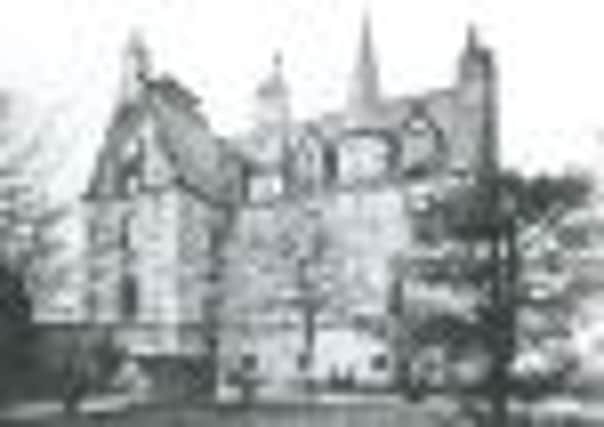A step back to the southside of old


Newly released The Country Houses, Castle and Mansions of Renfrewshire — a collection of 50 illustrated photographs from across Glasgow, East Ren and Renfrewshire — provides an insight into the area’s grandest buildings at their peak.
It’s the latest title from writer John Fyfe Anderson, who covered similar ground in Old Bishopton, Erskine and Langbank and Old Leadhills.
Advertisement
Hide AdAdvertisement
Hide AdThe Country Houses, Castles and Mansions of Renfrewshire — published by Ayrshire-based Stenlake and printed in nearby Thornliebank — is available now, and here’s our pick of the images within (photos of the houses below are included in the See More Pictures link above)...


Haggs Castle is located in the Pollokshields district, built in 1585 for Sir John Maxwell of Pollok. In 1943, during the Second World War, the castle was taken over by the military. Haggs Castle is now a private residence.
Langside House was designed by the distinguished Scottish architect Robert Adam and was built in 1777 on the crest of the hill between Mansionhouse Road and Camphill Avenue, quite near the present Mansionside Gardens. The first owner of the house was Dr Thomas Brown and the property was inherited successively by three of the four sons of Thomas Brown; the third sold the house to Neale Thomson who owned the Camphill estate. Langside House later became a preparatory school for St Aloysius’ College which was founded in 1859. The mansion was demolished in the 1950s.
Pollok Castle was situated one mile west of Newton Mearns. The site was the property of the Pollok family from the 12th century. Pollok Castle was built in 1696/97 and was damaged by fire in 1882. The castle was demolished in 1947.
Advertisement
Hide AdAdvertisement
Hide AdPollok House was built between 1747 and 1752 and was designed by William Adam. There are thought to have been three previous castles on the estate. Part of the Pollok estate was made open to the public from 1911 and the house was utilised as an auxiliary hospital during the First World War, with wards in the billiard and dining rooms. In 1966 Mrs Anne Maxwell Macdonald have Pollok House along with 361 acres of parkland to the city of Glasgow. There were terms made in this gift to provide a site for the Burrell Collection, although it was not until 1983 that the building housing the collection was formally opened by her majesty the queen.


Thornliebank House: the area of Rouken Glen Park was originally known as the Birkenshaw estate, which was purchased by Walter Crum (1796-1867), a chemist and businessman. His eldest son, Alexander Crum, rebuilt The Mansion House which was also known as Thornliebank House. After his death it came into the possession of his brother William who sold the mansion and estate to Archibald Cameron Corbett MP, later first Lord Rowallan, who presented the mansion and estate to the citizens of Glasgow. Rouken Glen Park was formally opened to the public on May 25, 1906. During the Second World War, Thornliebank House was used for military purposes. Later, its condition deteriorated and it was demolished in 1963.